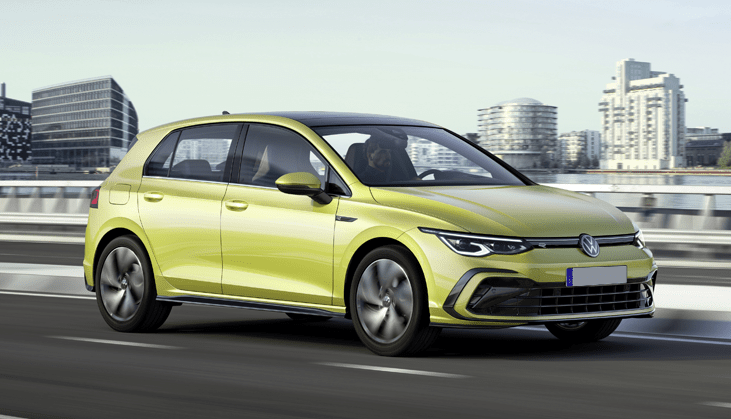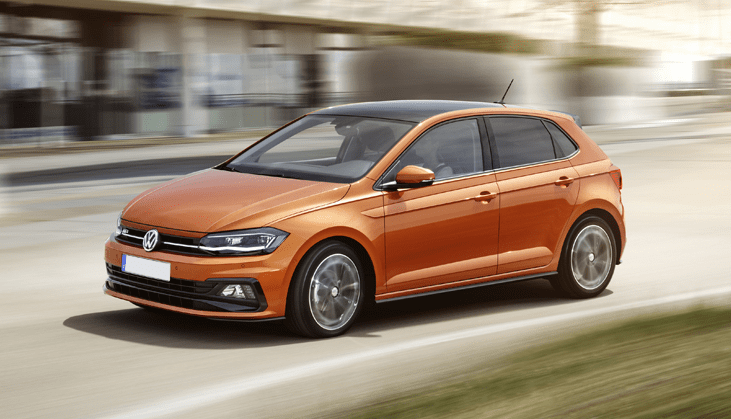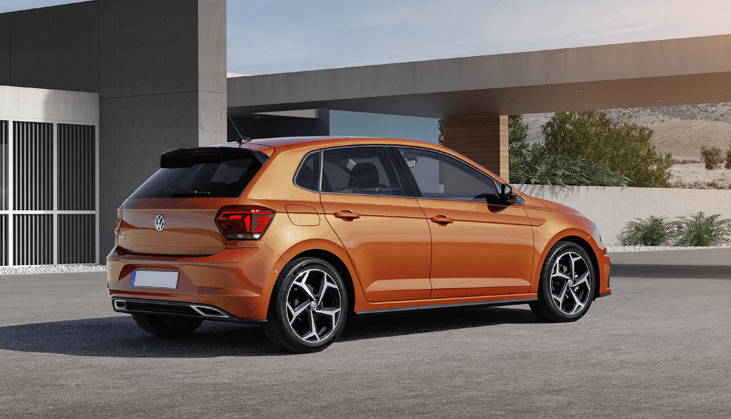The VW Golf vs VW Polo. These two are undoubtedly Volkswagen’s most famous models.
Having sold a combined 1.6 million in 2018 – and being the second and third-highest selling vehicles that VW produced worldwide in 2019 – they’re renowned for their popularity.
However, sometimes it can be tricky to pick between the pair in terms of which you should lease.
Here at Hippo, not only are we the company to offer you some of the best lease deals in the country, but we also go in-depth to help you decide which car is right for you.
So, are you a ‘Golfer’? Or is the Polo model more of a sweetener? (See what we did there? Polo, like the sweet.) Anyway, here’s our comprehensive guide to the pros and cons of each.
Design and styling
One of the first things to note is the similarity in design between the two. Both have kept resemblances of their respective trademark bodywork since being first released. In fact, some can rarely differentiate between the two.
They do have their differences, however – especially the 2020 models.
The Golf, primarily, is a lot more ‘futuristic’. Its LED headlights are slicker and appear more modern. The grille is smoother and sleeker, too.

In fact, in general, the Golf possesses a sportier look thanks, in part, to its lower ride height.
Having said that, the Polo also has advantages. It’s more compact, making it easier to drive around town, and at four metres long (compared to the Golf at 4.3 metres), as well as being a touch slimmer, it’s easier to park, too.
Out of the two, though, we prefer the Golf’s styling. It’s modern and looks to be making a slight advancement away from the usual Golf and Polo sister styling.
The Polo still looks good, but it would appear VW has been a bit more adventurous with the Golf, albeit while retaining its historic hatchback heritage.

MPG, running costs & environmental impact
The Golf has long been the market leader in its class.
However, in recent years, VW’s best-selling model of all time has come under intense competition from not only external rivals, but from models within the VW group, such as the Skoda Octavia and SEAT Leon.
As a result, VW has made the Golf more efficient than ever. They have replaced its old 1.6-litre diesel engine in favour of smaller, more efficient turbocharged options.
And by using the 1.0-litre turbocharged petrol model from both the Polo and Golf, we can gauge the best comparison.

The Golf returns an impressive fuel consumption rate of 53mpg – which is slightly higher than the Polo’s 49.6mpg.
Looking at the average price of petrol in the UK –111.95p per litre at the time of writing – the Golf’s fuel bill is £9.62 for every 100 miles driven. In the Polo, it’s £10.18.
Ultimately, this means you pay 56p more in fuel in the Polo every 100 miles compared to the Golf.

Admittedly, it’s not break-the-bank money. But if you were to complete 12,000 miles a year during your four-year lease, it’s over £260 difference. That could be enough to cover a monthly payment.
In terms of environmental costs, they both give off similar CO2 emissions. The Golf produces 111g/km and the Polo 110g/km in the 1.0-litre petrol.
In short, they’re both fairly eco-friendly. Because of that, in this spec, they both enjoy low first-year tax rates – the Golf £170 and the Polo £150 – both of which are included in a new car lease price with Hippo Leasing.
Overall, the VW Golf and Polo are incredibly similar when it comes to MPG, running costs and environmental impact. It’s tough to choose a winner. But, for lower overall running costs, we think the Golf edges it.
Engnes, drive & performance
First things first, let’s get into the stat that every budding car owner wants to know – the 0-60mph time.
The Golf edges this one, clocking up an 8.8 second score as opposed to the Polo’s slightly slower 9.6 seconds. The Golf also slightly edges the top speed– its 130mph narrowly prevailing against the Polo’s 124mph.
In terms of engine choice, the Golf’s more recent updates really shine through.
The Polo gets by just fine with its traditional petrol options, whereas the Golf has a bigger range, including petrol, a mild-hybrid model, and a couple of diesels.
A diesel version of the Golf is still your best bet if you’re driving a lot of motorway miles. It comes in two forms; 115hp or 150hp – both of which produce good mpg numbers.
However, if long journeys aren’t a regularity, you should definitely consider the mild-hybrid powertrain. It combines a 1.5-litre petrol engine with on-board batteries, resulting in a smoother drive and better fuel economy.
The Polo, however, is more one-dimensional. After all, it’s mainly designed for the city.
Its best option is the turbocharged 1.0-litre with 95bhp. It’s powerful enough for everyday driving and kind at the fuel stations.
However, it does only boast a five-speed gearbox. So, if you want six gears – which is standard across the Golf range – you’ll have to go for the higher-powered 115bhp Polo.
On the whole, again, the two are similar. The Polo boasts slightly better agility around town; although the Golf isn’t too far behind.
Anywhere out of town, though, the Golf emerges victorious. It’s better in the corners on tight A-roads and a more comfortable motorway cruiser.
With that in mind, the Golf is the one we’d choose.
Interior
The VW Golf and Polo, as you’d perhaps expect, are similar inside. They both feature a touchscreen centre console and are finished in good-quality plastic.
However, they also have their differences. The Golf is more sophisticated than the Polo. Its seats are plusher, and the interior buttons provide better feedback.
But the most notable difference between the two is the Golf’s all-digital display, which gives the VW hatchback a more prestigious feel compared not only to the Polo, but to a lot of other vehicles in its class, such as the Ford Focus or Seat Leon.

Since its inception, the Polo has been one of the more sensible cars of its type.
However, following the introduction and success of vibrant city cars, such as the Fiat 500, Vauxhall Corsa and even the Audi A1, VW has been forced to change tact.
It will still appeal to the grown-up driver, but there are extras which open the Polo up to a different customer base. The dashboard, for example, is available in 13 different colours.
But the Polo hasn’t fallen into the cheap and gimmicky trap. The quality is generally still very high, with an excellent fit and finish throughout.

And despite it not reaching the same heights of the Golf – which you’d expect for a cheaper car – it’s still well equipped; with parking sensors, Bluetooth, and Apple CarPlay.
Again, due to the two cars competing in slightly different markets – and in different price ranges – it’s hard to choose which is best. So, we’ll call it a draw. Both do a great job at paying testament to the quality VW offers.
Practicality
The practicality of both the VW Golf and Polo is a key factor in their respective long-standing success.
Acting as a popular car for any walk of life, Volkswagen has ensured that the spaciousness of each is pushed to the very limit, all while ensuring the overall performance doesn’t suffer.
The Golf has a huge 380 litres of boot space with the seats up, which is more than enough for five carry-on aeroplane bags – and more room than you get in a Ford Focus.
Even more noticeable, though, is its capacity with the rear seats down, which climbs to 1,237 litres.
And the Polo, despite its smaller stature, almost matches the Golf for boot space – holding an impressive 351 litres, which is just 9% less than its bigger sibling.
It’s not only competitive for its class, but given the previous model only held 280 litres, it also shows how the Polo has evolved into a very practical small car.
And it’s not as though the extra boot space in either has taken room from other areas. It hasn’t.
There’s still plenty of legroom, ensuring comfort for all passengers, and even more storage in the cabin.
It’s again difficult to compare the cars when they belong to different classes. But for this instance, we’re choosing the Polo due to its ability to keep up with the Golf despite its smaller frame.
Reliability & safety
As one of the leading vehicle manufacturers in the world, there are no real issues with VW’s reputation for creating a safe and reliable car. And this continues with the current Golf and Polo models.
When creating new editions – technologically and physically – there are some teething problems to be expected.
However, so far, it appears the Golf and Polo have escaped such issues in their latest forms, so reliability is expected to be strong.
Both have received 5* NCAP Euro safety ratings in their most recent tests, impressing the judges once again. That means you’re going to be in safe hands with either Volkswagen.
Cost & deals
We’ve already discussed fuel costs. However, another area you should consider is insurance premiums.
The cheapest Golf to insure is the S. It sits between category 7-17, depending on which engine you choose.
Inevitably, as you go up the specs and engine range, the insurance premiums increase too. But none are eyebrow-raising. Even the GTI – which is the most powerful Golf available until the R is released in 2021 – only sits in groups 29-33.
With the Polo, insurance groups are even lower. A simple S can start as low as group 1, rising to a maximum of 13. While the SE model just about matches it at 1-15.
These, once again, inevitably increase the more power and toys you add.
But again, to nothing unreasonable. For example, the most powerful Polo – the GTI – only falls under brackets 23-30. Not bad at all for a hot hatch.
When everything is considered, we think the Polo wins this sector. Yes, the Golf is cheap to insure, but you can’t beat the Polo for financial efficiency.
Final verdict
Overall, both cars offer a lot of diversity. In terms of performance, the VW Golf seems to edge the battle with a sportier, more modern set up, as well as offering cheaper MPG running costs.
Furthermore, the Golf is a more viable option as a family car due to its slightly larger stature, bigger boot and better tech.
However, the Polo impresses, too. It’s cheaper to lease than the Golf and less to insure like-for-like.
So, if you don’t need the space or added comfort of the Golf, then the Polo is the one we’d recommend.
But, if you’re looking for an out-and-out brilliant hatchback which beats everything in its class and price range, look no further than the Volkswagen Golf.
 Special Offers
Special Offers

 28th February 2019
28th February 2019  10 min read
10 min read 